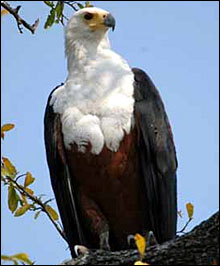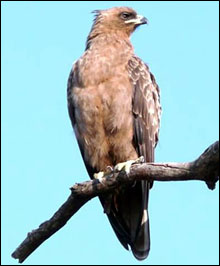Ndlovu Node launches citizen-science bird survey project
|
The SAEON Ndlovu Node has launched its first citizen science project, a
long-term bird survey for the lowveld region.
Global change - particularly climate change and land-use change - poses an ever-increasing threat to the ecosystems of the lowveld. Birds, being highly mobile species and high on the food chain, serve as good indicators of the response of ecosystems to these impacts.
Migratory birds are particularly sensitive to climate change, as the timing of their migratory journeys is influenced by seasonal temperatures. Changes in the migration patterns and ranges of birds may therefore provide an early indication of the effects of global change. Indeed in the northern hemisphere, where climate change is manifesting more rapidly than in the southern hemisphere, migratory bird populations are already being impacted by higher temperatures in the spring.
Long-term data sets spanning many decades exist for the arrival dates of many common European bird species. For example, in Britain the arrival dates of certain migratory birds have been recorded by the Royal Meteorological Society since 1883.
Data sets such as these have proved very valuable to avian researchers for identifying the factors that control the timing of migrations, as well as providing baseline data to detect changes in migration dates in response to climate change.
The Haplet data collection
Unfortunately there is little such long-term data for the bird species of South Africa. A rare example in the lowveld region comes from Mr Eldrid Haplet who lives and works on the Birmingham farm in the Timbavati Private Nature Reserve.
Mr Haplet has been recording his bird sightings every month since 1992, and in the process has produced data on 294 species, spanning between 2 and 15 years per species. In addition, he has recorded the date of first observation each spring for many of the migratory species in the area.
Mr Haplet has kindly donated his records to the Ndlovu Node, and a preliminary analysis of the data - as well as his remarkable birding efforts over the past years - provided the inspiration behind the new projects. Despite some missing observations, the Birmingham data indicate plausible trends in arrival date and abundance for some common species (figures below).
These results must of course be interpreted with caution, as they stem from a relatively small area. The aim of the citizen-science survey is to get other birding enthusiasts in the lowveld to generate similar data sets. In this way, changes in migration patterns, abundances and ranges will be detected at a regional scale.
How to sign up
More participants are needed, particularly in the far northern and southern parts of the lowveld. Anyone interested in participating in the project should contact Nikki Stevens (nikki@saeon.ac.za, or Tel. 013 735 3540) for more information.
Birders wishing to participate in the survey can sign up for one or both of two projects: the migration project and the abundance project. For the migration project, volunteers are tasked with recording the day of arrival of common migratory species in their garden, workplace, or favourite birding area. The abundance project requires more dedication, and involves the recording of all birds seen in a specific birding area every month.
So far a good response has come from the Phalaborwa and Hoedspruit areas. Congratulations to Mrs Ruth Griffin of Phalaborwa for sending in the first "official" data - the arrival of a yellowbilled kite!
For more information on the South African Bird Atlas Project, see SAEON to assist in keeping an eagle eye on Southern Africa's birds.
|














